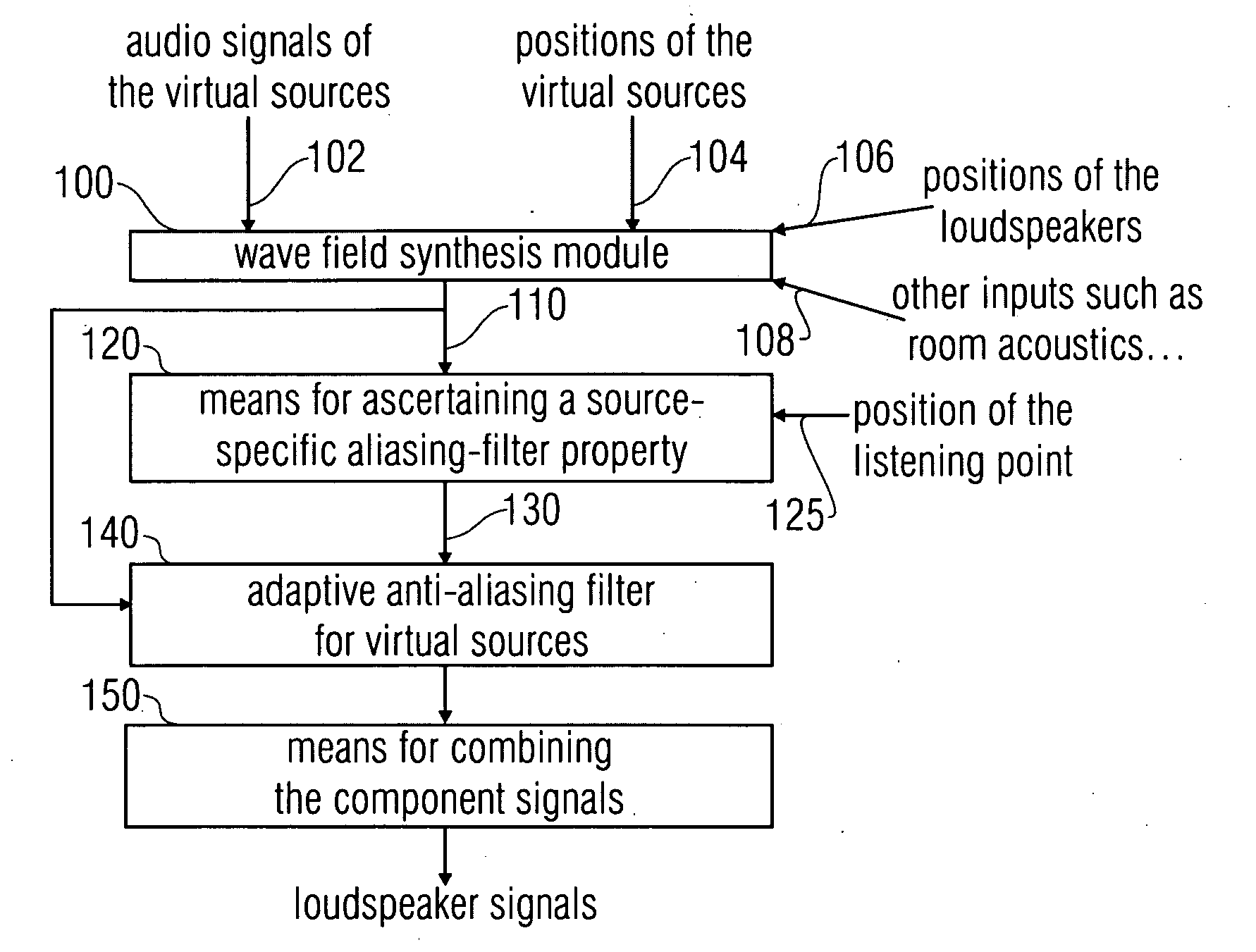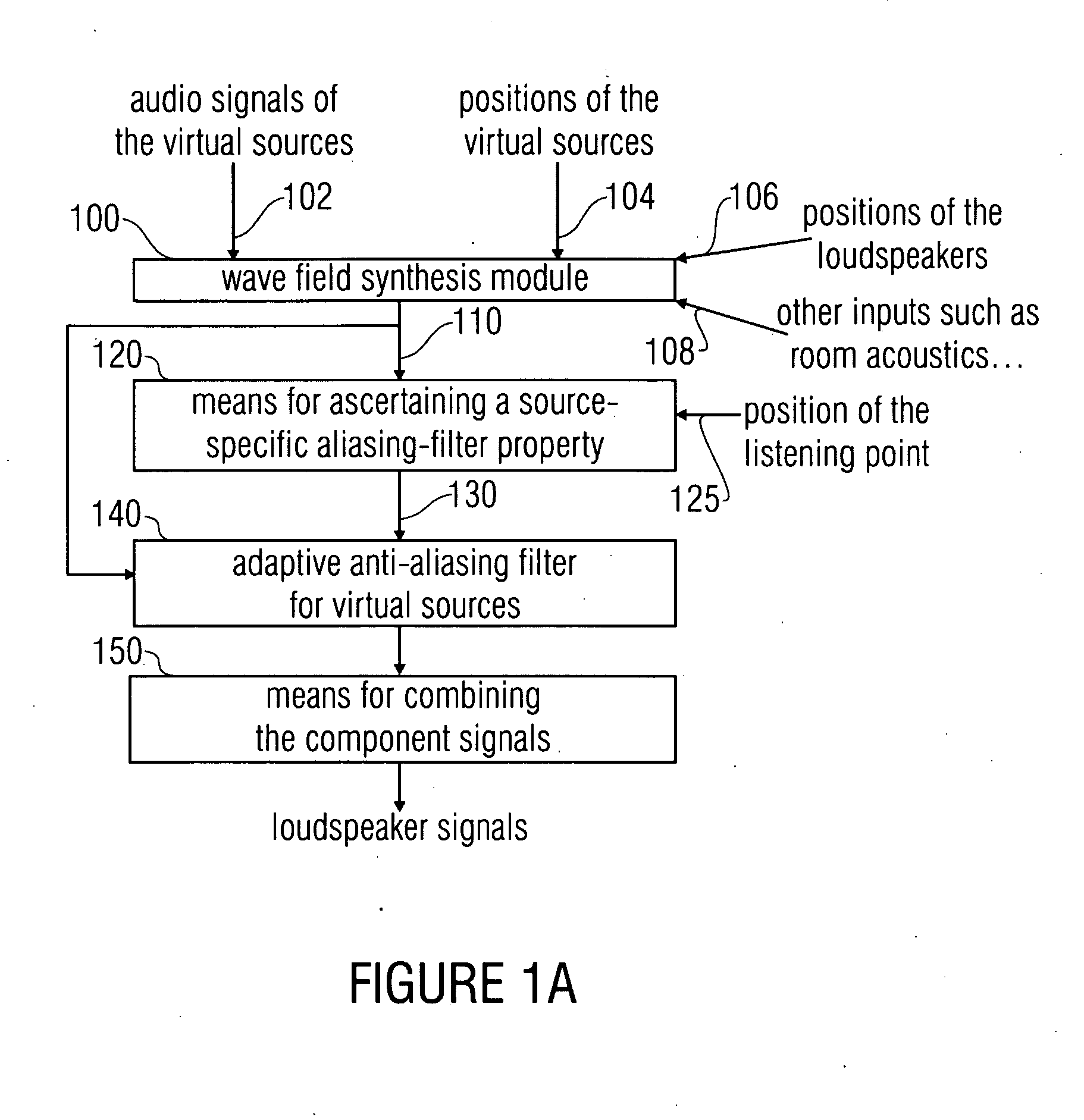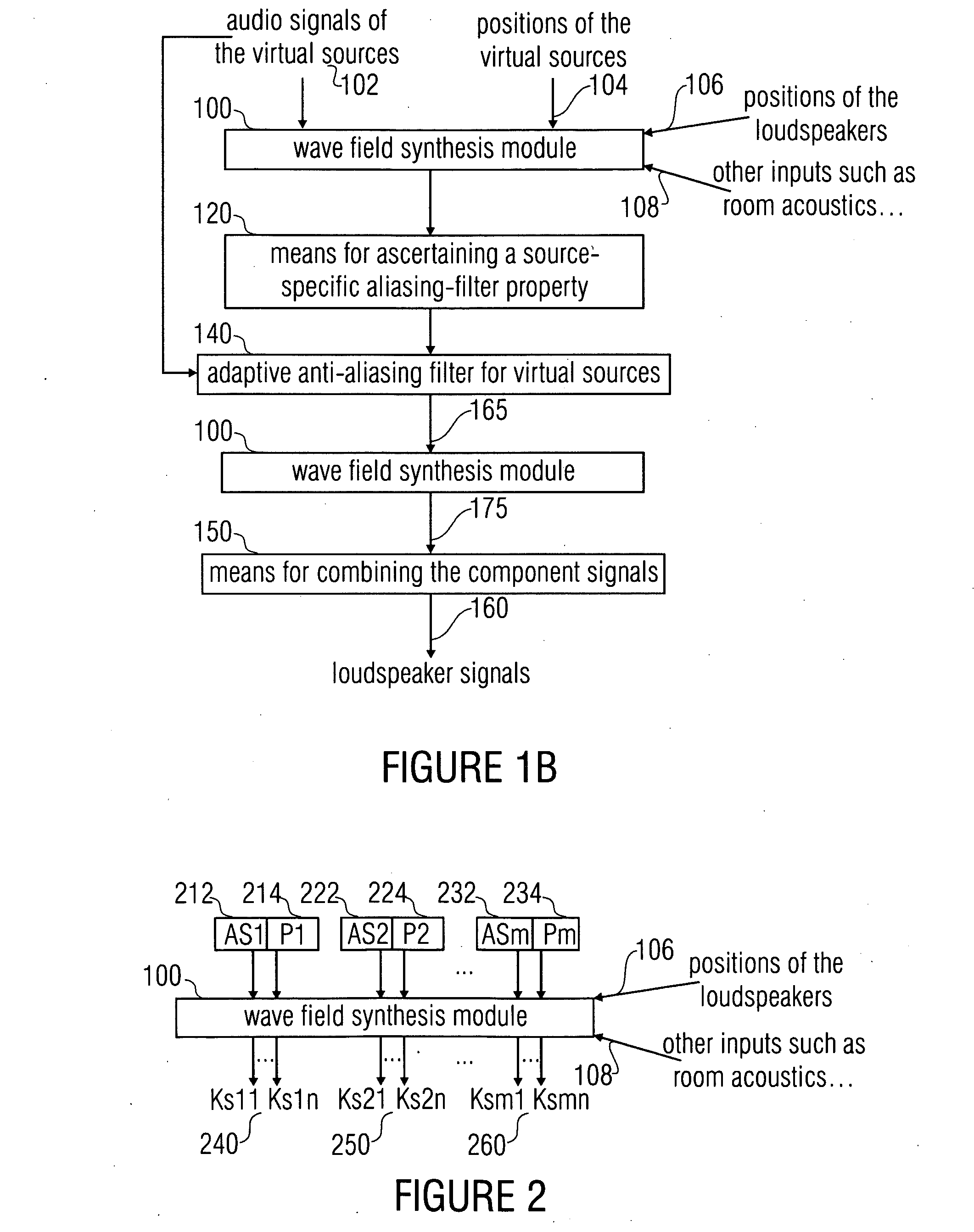Device and method for simulation of wfs systems and compensation of sound-influencing properties
a wave field synthesis and simulation device technology, applied in the field of wave field synthesis systems, can solve the problems of affecting the quality of natural, but also virtual environment spatial sound reproduction, and wave field synthesis has only rarely been used in the field of aliasing correction
- Summary
- Abstract
- Description
- Claims
- Application Information
AI Technical Summary
Benefits of technology
Problems solved by technology
Method used
Image
Examples
Embodiment Construction
[0042]Before the present invention will be detailed, the elementary setup of a wave field synthesis system will be illustrated in the following with reference to FIG. 7. The wave field synthesis system has a loudspeaker array 700 placed with respect to a show area 702. In particular, the loudspeaker array shown in FIG. 7, which is a 360° array, includes four array sides 700a, 700b, 700c and 700d. If the show area 702 is a cinema, for example, then it will be assumed with respect to the conventions front / back or right / left that the cinema screen is located on the same side of the show area 702 at which the sub-array 700c is also arranged. In this case, the viewer sitting at the here so-called optimum point P in the show area 702 would look forward, that is, to the cinema screen. Behind the viewer, the sub-array 700a would be located, while to the left side of the viewer, the sub-array 700d would be located, and while to the right side of the viewer, the sub-array 700b would be locate...
PUM
 Login to View More
Login to View More Abstract
Description
Claims
Application Information
 Login to View More
Login to View More - R&D
- Intellectual Property
- Life Sciences
- Materials
- Tech Scout
- Unparalleled Data Quality
- Higher Quality Content
- 60% Fewer Hallucinations
Browse by: Latest US Patents, China's latest patents, Technical Efficacy Thesaurus, Application Domain, Technology Topic, Popular Technical Reports.
© 2025 PatSnap. All rights reserved.Legal|Privacy policy|Modern Slavery Act Transparency Statement|Sitemap|About US| Contact US: help@patsnap.com



